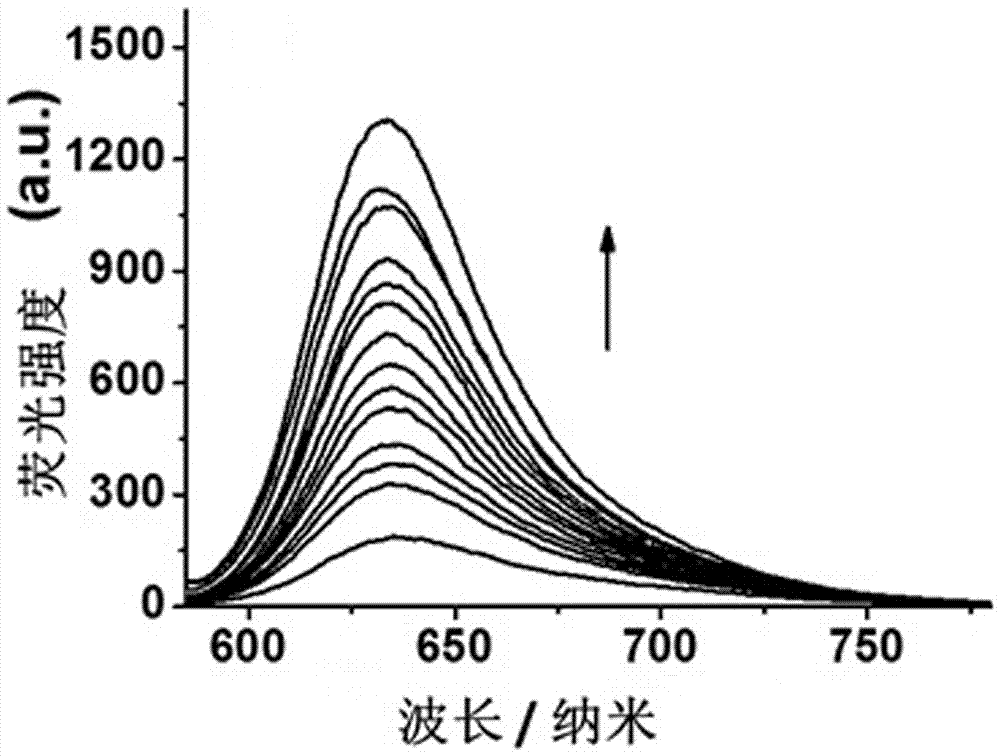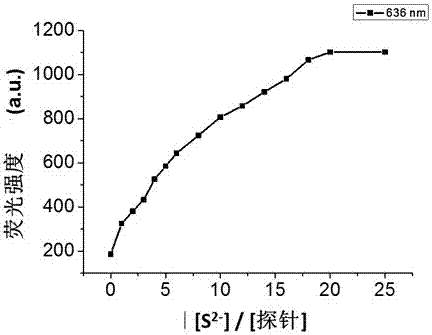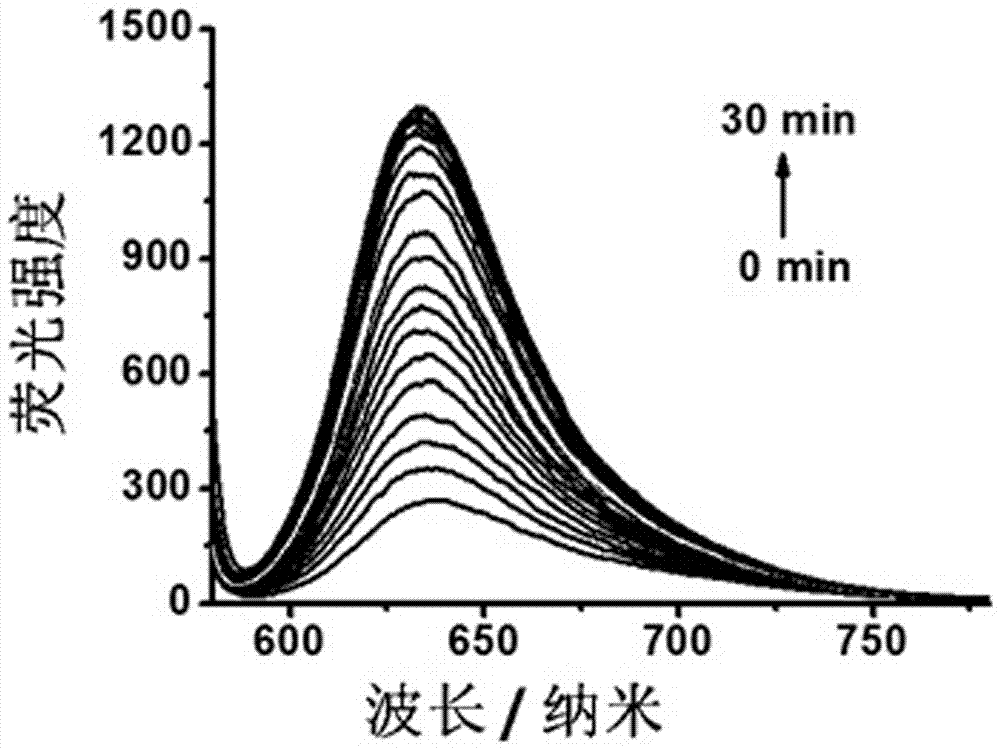Fluorescent probe for detecting hydrogen sulfide and preparation method and application thereof
A fluorescent probe and hydrogen sulfide technology, applied in chemical instruments and methods, fluorescence/phosphorescence, luminescent materials, etc., can solve problems such as limited application and long reaction time, and achieve high selectivity, high detection sensitivity, and product yield high effect
- Summary
- Abstract
- Description
- Claims
- Application Information
AI Technical Summary
Problems solved by technology
Method used
Image
Examples
Embodiment 1
[0039] A fluorescent probe for detecting hydrogen sulfide, characterized in that the molecular formula of the fluorescent probe is C 21 h 21 N 4 o + , has the structure shown in formula (I):
[0040]
[0041] (I).
[0042] A method for preparing a fluorescent probe for detecting hydrogen sulfide, comprising the following steps:
[0043] (1) Add white solid salicylaldehyde to the mixed solution, react at 45°C for 12 hours, pour the reaction solution into ice water, add perchloric acid drop by drop, precipitate the solid, and recrystallize the solid with ethanol to obtain Compound 1;
[0044] In the step (1), the mixed solution is prepared from 6-amino-1,2,3,4-tetrahydro-1-naphthalenone and 98wt% concentrated sulfuric acid at a volume ratio of 6:20.
[0045] In the step (1), the molar ratio of 6-amino-1,2,3,4-tetrahydro-1-naphthone to salicylaldehyde is 1:200.
[0046] (2) Compound 1 was reacted with sodium azide at 0°C for 5 h in an acidic environment, and then separa...
Embodiment 2
[0053] A fluorescent probe for detecting hydrogen sulfide, characterized in that the molecular formula of the fluorescent probe is C 21 h 21 N 4 o + , has the structure shown in formula (I):
[0054]
[0055] (I).
[0056] A method for preparing a fluorescent probe for detecting hydrogen sulfide, comprising the following steps:
[0057] (1) Add white solid salicylaldehyde to the mixed solution, react at 50°C for 8 hours, pour the reaction solution into ice water, add perchloric acid drop by drop, precipitate the solid, and recrystallize the solid with ethanol to obtain Compound 1;
[0058] In the step (1), the mixed solution is prepared from 6-amino-1,2,3,4-tetrahydro-1-naphthalenone and 98wt% concentrated sulfuric acid at a volume ratio of 6:100.
[0059] In the step (1), the molar ratio of 6-amino-1,2,3,4-tetrahydro-1-naphthone to salicylaldehyde is 1:100.
[0060] (2) Compound 1 was reacted with sodium azide at 0°C for 5 h in an acidic environment, and then separa...
Embodiment 3
[0067] A fluorescent probe for detecting hydrogen sulfide, characterized in that the molecular formula of the fluorescent probe is C 21 h 21 N 4 o + , has the structure shown in formula (I):
[0068]
[0069] (I).
[0070] A method for preparing a fluorescent probe for detecting hydrogen sulfide, comprising the following steps:
[0071] (1) Add white solid salicylaldehyde to the mixed solution, react at 55°C for 2 hours, pour the reaction solution into ice water, add perchloric acid drop by drop, precipitate the solid, and recrystallize the solid with ethanol to obtain Compound 1;
[0072] In the step (1), the mixed solution is prepared from 6-amino-1,2,3,4-tetrahydro-1-naphthalenone and 98wt% concentrated sulfuric acid at a volume ratio of 6:200.
[0073] In the step (1), the molar ratio of 6-amino-1,2,3,4-tetrahydro-1-naphthone to salicylaldehyde is 1:20.
[0074] (2) Compound 1 was reacted with sodium azide at 0°C for 5 hours in an acidic environment, and then sep...
PUM
 Login to View More
Login to View More Abstract
Description
Claims
Application Information
 Login to View More
Login to View More - R&D
- Intellectual Property
- Life Sciences
- Materials
- Tech Scout
- Unparalleled Data Quality
- Higher Quality Content
- 60% Fewer Hallucinations
Browse by: Latest US Patents, China's latest patents, Technical Efficacy Thesaurus, Application Domain, Technology Topic, Popular Technical Reports.
© 2025 PatSnap. All rights reserved.Legal|Privacy policy|Modern Slavery Act Transparency Statement|Sitemap|About US| Contact US: help@patsnap.com



